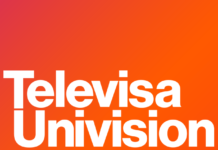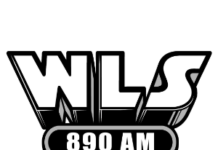
(By Mike McVay) I’ve heard many a Program Director tell me that they wish they had time to program their station. I get it, as many of today’s PDs are multitasking and their priorities change daily often driven by non-content projects. In the past, there seems to have been a greater focus on competitive programming tactics being employed. This was in a day when one Program Director programmed one radio station versus today.
The tactics to build radio ratings aren’t new. The inability to act and react quickly to a move by a competitor is a new phenomenon. It’s something that I’ve been observing more and more of late. That and the lack of paying attention to the details that give one station an advantage over another.
Successful PDs counter-program their competition. They realize a threat when they hear it, evaluate the significance of the threat, and then block it or use their strengths to redirect the competitor’s threat. They also know what isn’t a real and true threat, which is then ignored. Sometimes what you don’t do is as important as what you do. The key is being reactive, when necessary, by playing defense. To move forward and grow an audience, the approach needs to be on offense. Knowing when to shift from one to the other is where experience and knowledge meet art.
It is critical to focus on the often-forgot tenets of good clock structure. When you air commercials, the prioritization of loading stop-sets and the order in which commercials are played is important. We know from best practices that there can be an advantage to counter-programming a competitor’s stop-sets by getting into and out of a break before them. How you prioritize loading your commercial breaks is important and which stop-set is loaded first in an hour matter. Don’t fill your stop-sets equally as to load one before the other makes long music sweeps a possibility. Playing commercials that sound the most like music, before other less produced-sounding commercials, is another tactic to extend time spent listening.
Music Programming, song selection, and placement is important. The same goes for spoken word where Hot Topics are the same as a Hit Song. Every quarter hour needs to have a consistent feel to it. Because listeners listen habitually, a poorly balanced hour can give one listener a different impression of a station versus what was intended. Place the most popular songs and those with the best research scores in the parts of the hour that give you the best opportunity to play and win the rating game. Audit your music scheduling system weekly and look for song repetition issues, check for titles that aren’t playing, but should be, and for turnover within categories that can create listener fatigue.
Advertising your own programming, promotions/contests, events, and the benefit of listening is one of the best ways to market your radio station. Commercials on your station for your station are an oft-used marketing tool. Such promotional messages must be written with a benefit clearly noted upfront in the message. Produced promos should air first in a commercial break. There is no message more important than your own. They should be scheduled in a way that allows the message to move vertically through the day and horizontally through the week.
The most cost-effective way to create a radio dynasty is with talent. Talent with a high entertainment value and the ability to create daily listening strengthen a station against attack. If you can establish that your talent are informative, entertaining, able to engage an audience and they know how to create word-of-mouth in a community, you will have an advantage over any new competitor who enters the market. On-air personalities make dynasties. It can cost a lot of money to go against a radio dynasty. It takes time to become familiar to a prospective audience. They have to know you before they love you. Talent give you the ability to withstand many attacks if you work with them and enable them to do the job they were hired to do.
Lastly, play the ratings game by continually branding your station and presenting a positioning statement based in a benefit. This applies to metered markets as well as diary markets. Listening is only half of the equation. Getting credit for listening is the other half. The most important half.
Mike McVay is President of McVay Media and can be reached at [email protected]. Read Mike’s Radio Ink archives here.






Mike, you bring up great points! Counter-programing to the competition is kinda tough when the “competition” is down the hall, and your boss is at the door saying “hey, that song is part of the WXXX (the AC down the hall) image. You shouldn’t be playing it”. (It’s happened to me.)
Who’s the competition? Who’s the audience? What are the tactics? Who’s got the responsibility and accountability for the results? Seems the major companies have RVPPs, PPVPs, MPVPs and the top-heavy minds whose responsibility should be to make sure their “captains” have a great plan. We’re so top-heavy these days how can the great PDs be . . . PDs? It seems that these days the job of a PD has been absorbed by someone who’s also got a massive amount of territory and responsibilities to cover. It’s a 24/7 job that only Superman can do.